Standards Worldwide
Standards Worldwide
Phone +49 30 58885700-07

Standard [WITHDRAWN] Article is not orderable
ASTM D 5026:2015
Standard Test Method for Plastics: Dynamic Mechanical Properties: In Tension
- Publication date
- 2015
- Original language
- English
- Pages
- 4
- Publication date
- 2015
- Original language
- English
- Pages
- 4
Product information on this site:
Quick delivery via download or delivery service
Buy securely with a credit card or pay upon receipt of invoice
All transactions are encrypted
Replacement amendments
This document has been replaced by: ASTM D 5026:2023 .
Loading recommended items...
Loading recommended items...
Loading recommended items...
Loading recommended items...
